[Mr.Chuo-ku]
October 29, 2014 14:00
Mandarin Oriental Hotel Tokyo, located in Nihonbashi Muromachi Rit, was evaluated as "6 stars" (9 consecutive years since the world's first "6 stars" in 2006) at the American Academy of Hospitality Science 2014. Was.

There are nine of the finest hotels in Tokyo that have been rated "5 stars" in Michelin, and this hotel is also included.
The hotel offers a panoramic view of Tokyo Bay, Sumida River, Imperial Palace, Otemachi, Marunouchi, Mount Fuji, and Tokyo Sky Tree.
Official Homepage
http://www.mandarinoriental.co.jp/tokyo/
[Ryokichi]
October 28, 2014 16:00
The plating days are getting shorter these days. I want to enjoy the longer night in the coming season.
The other day, October 8 was a total lunar eclipse, so I took a walk in Chuo-ku to see the moon.
That evening, the weather was fine and the weather was fine, so it was astronomical observation in a favorable environment.
Meanwhile, it was Shinohashi that I chose to see the moment when the moon was hidden in the total lunar eclipse.
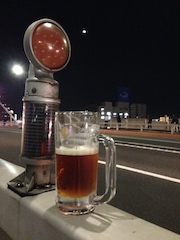
This street, along the Sumida River is the best for viewing the moon. In Tokyo, the moon is not often seen due to the lighting of buildings, but there is no problem along the river. By the way, there were many people with similar ideas, and the bridge was full of people.
While watching the gradually lacking moon, I took a draft beer from a familiar shop in the neighborhood and enjoyed the lingering sound quietly on the bridge.�(I returned the jok later.)
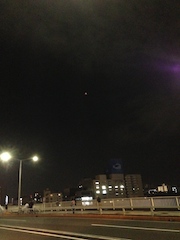
The important point is that the moon gets darker, so my lack of preparation was a bad result, but in the second photo, it is just before it gets dark, so the atmosphere may be somehow transmitted .
After that, I was watching the moon, or seeing the moon disappear.
[Satoken]
October 19, 2014 18:00
In the fine autumn weather, we walked and went to Bettara City.
It was the first Betara city, but I was surprised that there were many people.
Until last week, the typhoon came for two consecutive weeks, so it would have been thrilled.
On the way, there was something nuts at the base of Kayaba Bridge. Because there was no tree name
I don't know the details, but I guess it's a pomegranate or a akebi.
It was a very pleasant day.



[Sam]
October 11, 2014 09:00

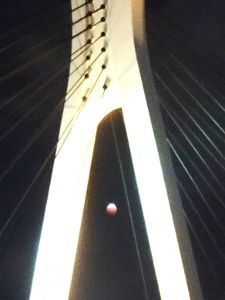 On the night of October 8, there was a "total lunar eclipse" where the moon glowed dullly in red and bronze.
On the night of October 8, there was a "total lunar eclipse" where the moon glowed dullly in red and bronze.
A total lunar eclipse is a phenomenon in which the earth enters between the sun and the moon, and the shadow of the earth falls on the moon.
It is the first time that a total lunar eclipse has been observed in Japan for the first time in three years since December 2011.
It began to chip around 18:15, and it became a total eclipse from around 19:25 to around 20:25.
It is said that red light, which has a long wavelength of sunlight, is refracted and scattered in the Earth's atmosphere and slightly illuminates the moon, so it does not become dark and looks dull red bronze.
Astronomical show that takes about 3 hours and 20 minutes in total, including partial meals.
The next total lunar eclipse will be seen in Japan on April 4, next year.
The upper left photo shows the "partial meal" in progress at around 18:45, as seen from the main tower of Chuo-ohashi Bridge.





[Sam]
18:00 on October 7, 2014
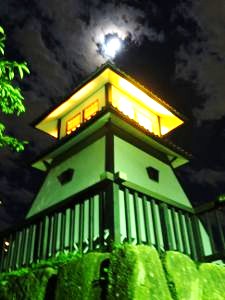
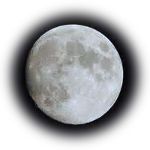 This year, October 6 is September 13, old calendar, and "Thirteen Nights".
This year, October 6 is September 13, old calendar, and "Thirteen Nights".
The 15th Night of old calendar on August 15 is called "Imontsuki" because of the custom of offering taro during the harvest season, but it is also called "Kurinametsuki" or "Mamenametsuki" or "later month".
The lack of moon viewing on one side of the fifteenth and thirteenth nights is called "Kata Mizuki", and it is said that there is a bouncing wind.
It is considered a custom unique to Japan and is thought to have been one of the autumn Harvest festivals.
In general, the night of the thirteenth night is often sunny, and I hear the word "no cloudy on the thirteenth night".
This year, Typhoon No. 18 passed in the morning and the blue sky spread in the afternoon, but at night, spotted clouds.
The "moon floating in the waves of clouds" shining on the "top" of Ishikawajima Lighthouse at lit up Tsukuda Park also has a taste.
[Sam]
09:00 on October 4, 2014
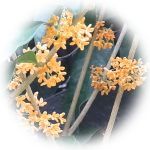
 In October, the plating becomes cooler in the morning and evening, the leaves of the grass gradually begin to change color, and you can feel the sign of autumn in the breeze blowing.
In October, the plating becomes cooler in the morning and evening, the leaves of the grass gradually begin to change color, and you can feel the sign of autumn in the breeze blowing.
Harumi Triton Square's "Green Terrace" and "Flower Terrace" will soon reach the colorful "fall colors" season.
There is a fragrance of "Kinmokusei" in the park. (upper right photo)
This time, the theme of the monthly “Mini Garden Guide Tour” held on October 2 <real thing (Mimono) and spring flower buds> I will introduce the real thing that is changing color and the flower buds next spring are growing little by little while waiting for the time to come.
By the way, "plants walk" is said to be "town walk" based on "green" that loves plants while strolling around the park and the city (town).
Discover the unexpected charm of the city area and add color to your daily life.
It is often thought to be a white version of Japan globeflower (5-petaled flowers, leaves alternate), but the fact of Shiroyamabuki (4-petaled flowers, leaves are opposite) belonging to the family Rosaceae is glossy black.
The cypress family Conodegashiwa fruit, which is said to have been named after the twigs are well branched and lined up like a child's palm, is a unique shape with a projection.
dogwood, Hachijoukibushi, Tamushiba, Japanese allspice ... Preparation of flower buds for next spring is progressing steadily.





Cishiyuzu Kinkan Hymeringo Squirrel Sanshuyu





China Japanese dogwood Soyogo Conotegashiwa Squirrel White butterfly





Holly mochi dogwood Beetle (flower buds) Tamushiba (flower buds) Japanese allspice (flower buds)








 This year, October 6 is September 13, old calendar, and "Thirteen Nights".
This year, October 6 is September 13, old calendar, and "Thirteen Nights".
















